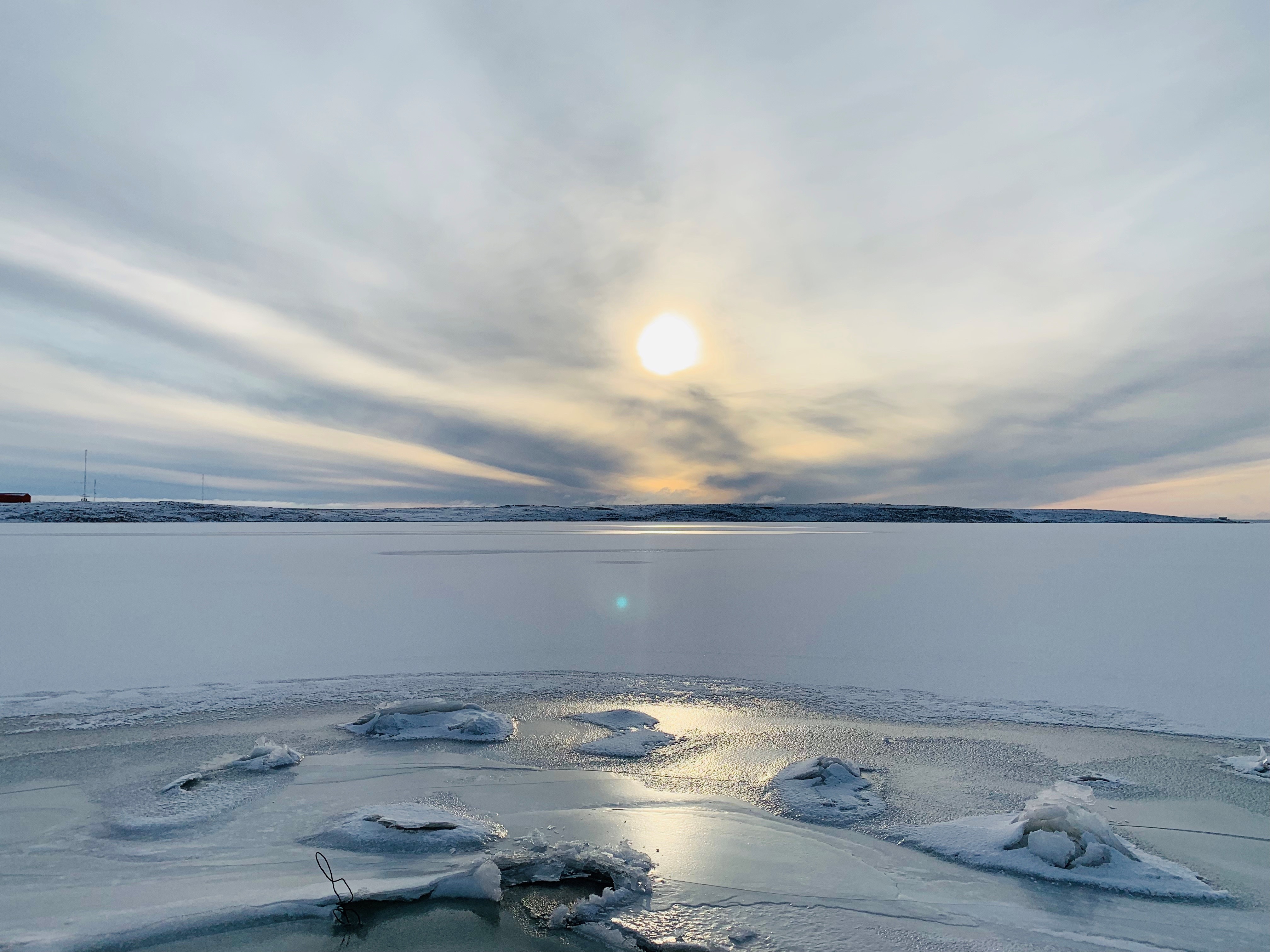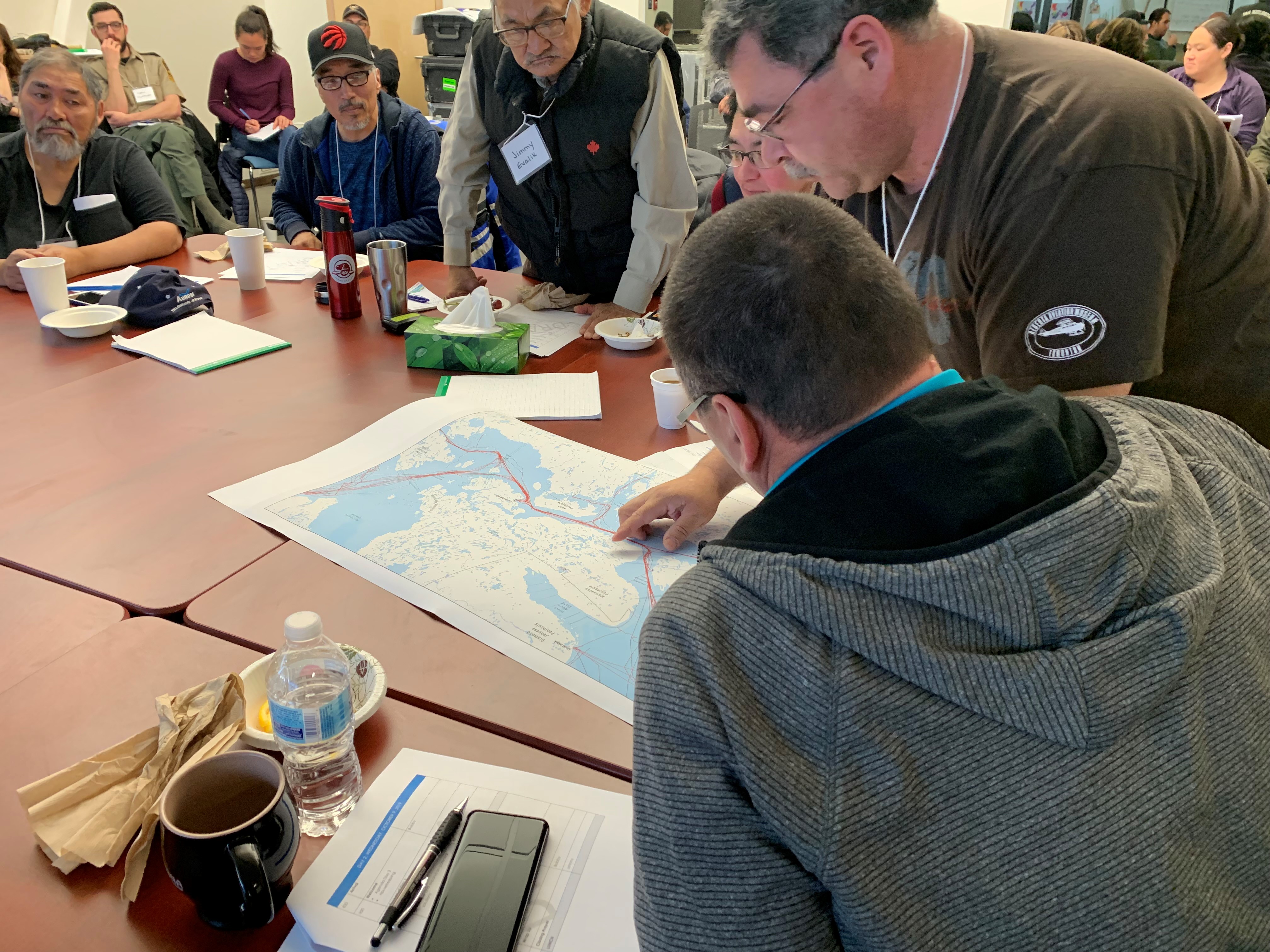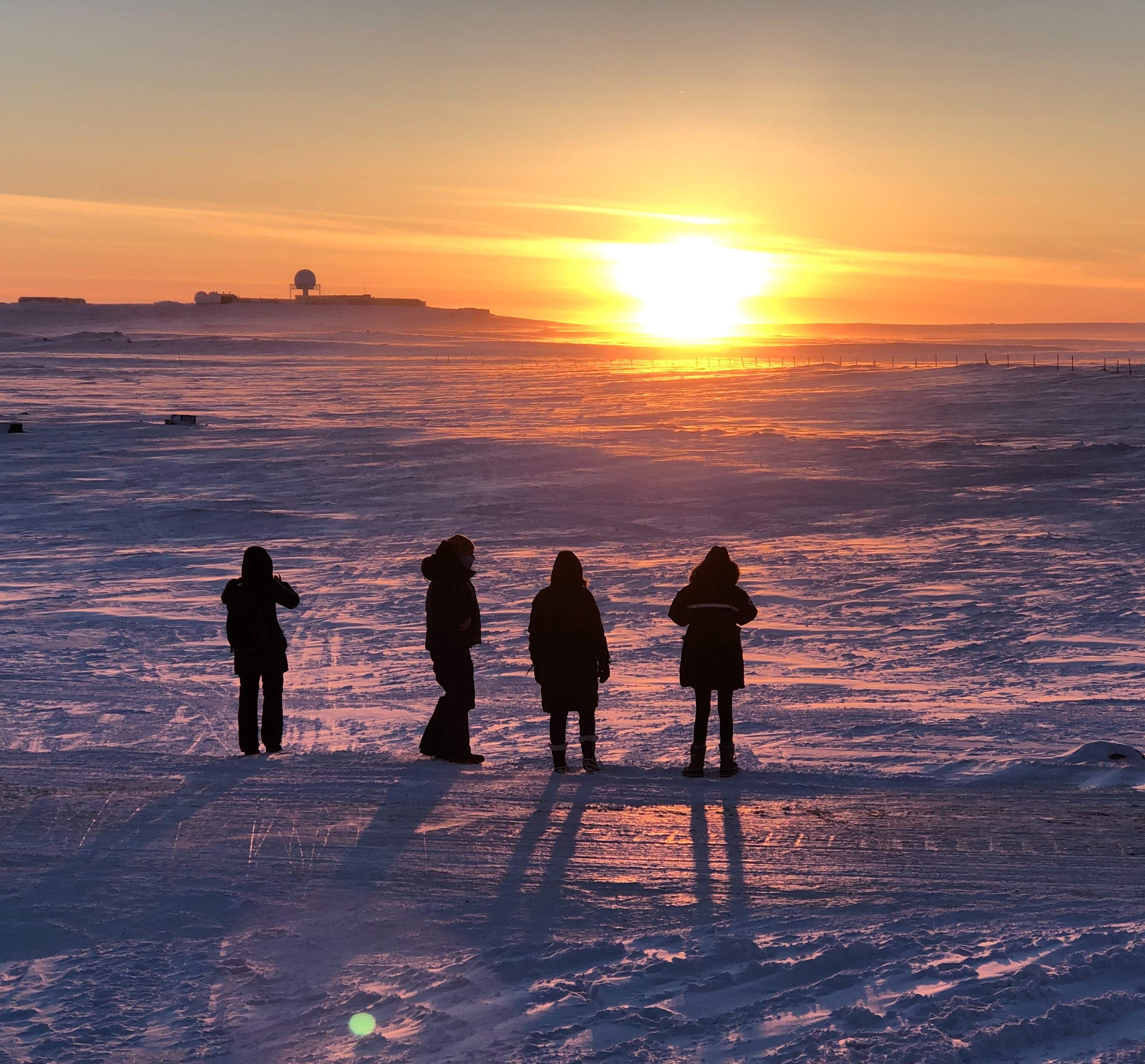Every October in Nunavut, sub-zero temperatures set in and waterways start to freeze over, forming a highway that connects residents between communities and keeps food security and cultural traditions alive—such as caribou hunting. Due to the effects of climate change over the years, the sea ice is now thinning and caribou herds are changing their annual migration patterns with the shifting sea ice formations, forcing the hunters to alter their paths in pursuit.
However, the caribou and hunters are not the only ones who need to adapt to the sea ice—with 90% of consumer goods transported by marine shipping, icebreaker vessels are faced with unpredictable and ever-changing conditions in their duty to guide marine traffic and support essential re-supply services. As icebreakers pave the way through the thickened ice, this potentially creates a risky and even life-threatening situation for wildlife or hunters to be stranded on ice floes.
To mitigate these safety risks, Transport Canada, working with a variety of partners, co-developed the first Notice to Mariners (NOTMAR) for the Kitikmeot Region, issued in March 2020. This NOTMAR means communities can be notified in advance when icebreakers are coming through and make sure hunters can continue to safely travel over the sea ice. Meanwhile, icebreakers can maintain their operations to safely guide marine traffic around or through ice-covered waters, and prevent ice jams that can cause flooding.
The NOTMAR is the result of four years of progress on two separate Oceans Protection Plan initiatives – Proactive Vessel Management and Cumulative Effects of Marine Shipping. Transport Canada worked with the Victoria Island Waterway Safety Committee, the Ekaluktutiak Hunters and Trappers Organization, territorial governments, the shipping industry and the Canadian Coast Guard to advance these initiatives and address safety concerns on the waterways. Researchers and industry representatives were closely aligned on the icebreaking issue at hand and recognized the opportunity to collaborate on a solution, while also looking for new ways to protect environmentally and culturally sensitive areas, such as the Northwest Passage around Cambridge Bay.
Prior to the Oceans Protection Plan we didn’t have any communication. Now we are working really well together. We know when people are going through breaking up the ice. We’ve established good points of contact and a good path forward. We’ve accomplished so much under the Oceans Protection Plan.
This has been such a rewarding experience. Getting to know and work with people in the local community and bringing together all the partners and stakeholders to listen to and address their local concerns, makes me really proud of the work I’m doing.
Under the NOTMAR, in effect from April through November, all vessels must provide one week’s notice of their passage to a list of communities and follow-up 24 hours in advance of passage. This measure also includes coordinating transit activities with local representatives and requires vessels to slow down to minimum safe speeds if caribou or people are encountered.
Keeping these lines of communication open among all partners has really been the key to success of this pilot project. Now we’re seeing other Arctic communities looking to adopt this strategy as well.
Since 2016, the Oceans Protection Plan has launched over 50 initiatives that have made marine shipping safer, increased protection for our marine species and coastal ecosystems, and improved Canada’s ability to prevent and respond to marine incidents. To learn more about the Oceans Protection Plan and how it’s protecting our coasts and waterways, visit our page.


